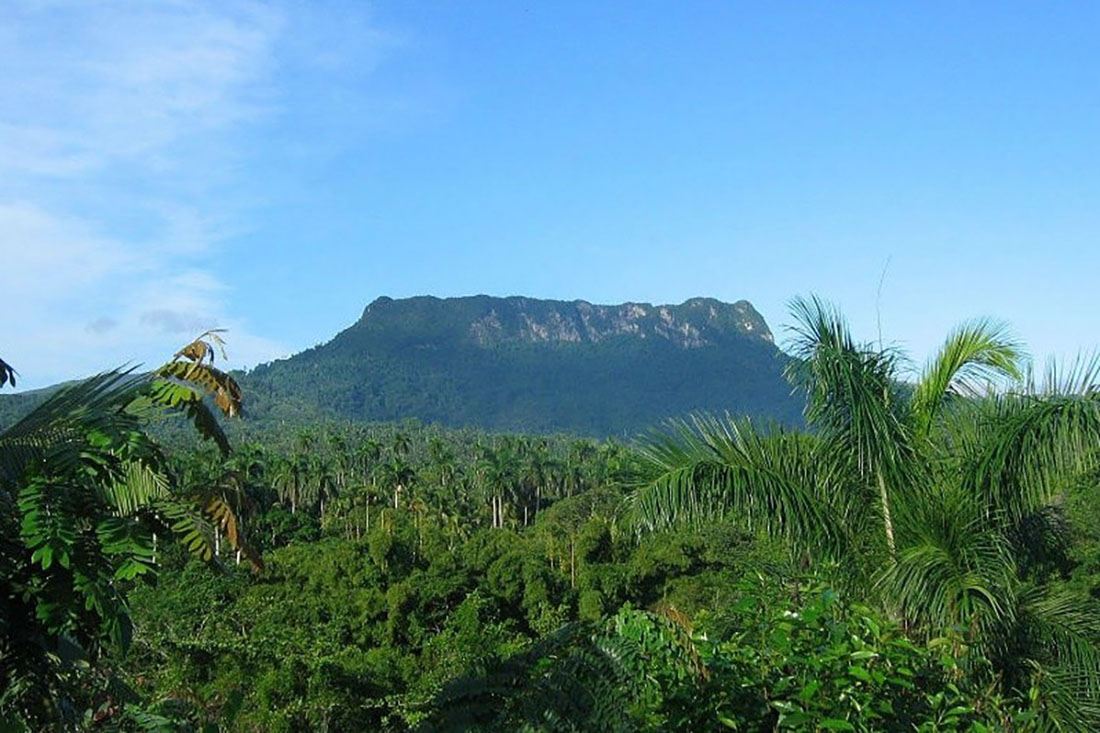In the depths of the Cuban East is the first of the seven founding villages, Nuestra Señora de la Asunción de Baracoa, one of the most atypical regions of the Island, which stands out for its historical, cultural and patrimonial values.
Precisely, one of its most important geographical symbols is The Yunque, a flattened mountain that is part of the Cuchillas del Toa Biosphere Reserve – declared a National Monument on December 25th, 1979.
Considered by experts as the Outstanding Natural Element of Baracoa, it was described by Christopher Columbus in his Navigation Diary as a tall and square mountain that looked like an island.
A great attraction for visitors
As it has an area of 2,126 hectares, with its highest height being 575 meters above sea level, it turns out to be a great attraction for nature-loving visitors —particularly for climbers, since they require great physical effort to climb, and doing so, often leads to exhaustion, after five hours of walking and climbing.
When touring this mountain you can appreciate not only the beauty of its landscape, but also a high degree of conservation and endemism with a wide representation of birds such as the tocororo, the cartacuba, the cao and the rabiche pigeon. Likewise, at its summit is the coccothrinax yunquensis, a palm tree endemic to this mountain in the shape of a blacksmith’s tool -as its name indicates- among other natural elements.
The Sentinel of Baracoa
Its location, the visibility from its top, favored by being a flat slope and its observation from any part of the region make it the sentinel of this beautiful city, the first of Cuba, which celebrates its foundation every August 15th with secular and religious activities, as a primary element in their spirituality, among other types of events.
At the same time, it serves as a guide and beacon for sailors approaching the coast from the Atlantic Ocean.
In this sense, for all that it represents, all the seduction that it produces both in the visitor and in the native has been manifested into art; hence poems, paintings and photographs are dedicated to it.
Conclusions
This is how the Yunque stands out as one of the most distinctive elements of the region, not only for its geographical and natural values, but also for being a symbol of identity of the inhabitants of the oldest town in Cuba.
Bibliography:
– García González, Ivette. Vivir en la frontera imperial: Baracoa la primada de Cuba. Revista Mexicana del Caribe, 9 (2000), 104-139.
– Noa Fáez, Leandris. El Yunque: Centinela de la ciudad. Boletín, No. 1/19, 15 de agosto de 2019.
Translated by: Aileen Álvarez García






